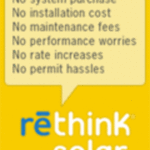Finding the right battery for your car, boat, RV or home solar system is enough of a journey. Most people believe that a car battery only lasts for up to three years. They could last as long as five. Most deep cycle batteries should last up to five years, with some brands lasting as long as eight.
Sadly, most batteries need to be replaced before their time. It only takes a few minutes and a few steps to make them last longer. Here are things you can do to make your batteries last their longest.
One:
Inspect your batteries for corrosion on a regular basis. Use the proper substances and brushes to clean your battery and terminals. Replace corroded, worn or loose battery cable connectors. If a connector is loose, never try the “old-fashioned” trick of bending a penny and placing it around the terminal. That’s a good way to damage the battery, cause a short to your electrical system or start a fire.
Two:
Once you start the car, let the alternator charge the battery before turning accessories such as the heater, radio, AC, wipers and so forth on. A battery that is low will be unnecessarily taxed while it is trying to charge and will wear out quicker.
If the car will not be started for over a week, hook up a battery minder to the car’s battery. This will keep the battery charged, reduce sulfur buildup and keep the battery in good shape. It will not allow the battery to over charge.
For deep cycle batteries, never let the amount of drain drop below 50 percent. On certain battery models, the drain can be up to 80 percent according to the manufacturer. Hook up a battery tender to keep the batteries safe during periods of non-use.
Three:
Batteries should not ride loose in the battery tray. In all vehicles, tie the battery down securely with battery ties. If the vehicle is missing them, find and install the right ones for your vehicle’s battery as fast as possible. A battery that shakes or vibrates can short out or potentially fall onto the engine. This could have disastrous results.
In enclosed spaces such as homes and RV’s, lead acid batteries should be vented to the outside. Lead acid batteries produce hydrogen gas. AGM batteries are sealed and do not require venting. They should still be secured in place.
Four:
For cars or vehicles experiencing extreme cold, battery insulation is a must. Newer vehicles have this installed. There are kits for existing vehicles and batteries. They are made from special materials that allow the battery to operate and vent if needed.
Lead acid, nickel-metal hydride and AGM batteries need insulation against extreme cold.
Five:
Routinely test your batteries to ensure they are operating at their best. How you test the battery depends on its type. The various types of batteries are:
- · Lead acid
- · Nickel-metal hydride
- · Lithium-ion
- · AGM
- · Gel
Each battery requires its own specific testing tools and methods. By learning how to test your batteries, you can identify a problem before it starts.
By following these tips, your batteries could last beyond the maximum manufacturer’s recommendations. That saves you money in the long term, as you would not have to replace them as often.
Source: Staff Article, “Extend Car Battery Life: 5 Simple Steps,” AtBatt Offers website, no date given
Source: The author of this article has over 40 years of experience in diverse forms of DIY, home improvement and repair, crafting, designing, and building furniture, outdoor projects, RV’ing and more.
Source: Staff Article, “Battery Basics: A Layman’s Guide To Batteries,” Battery Stuff.com website, no date given





